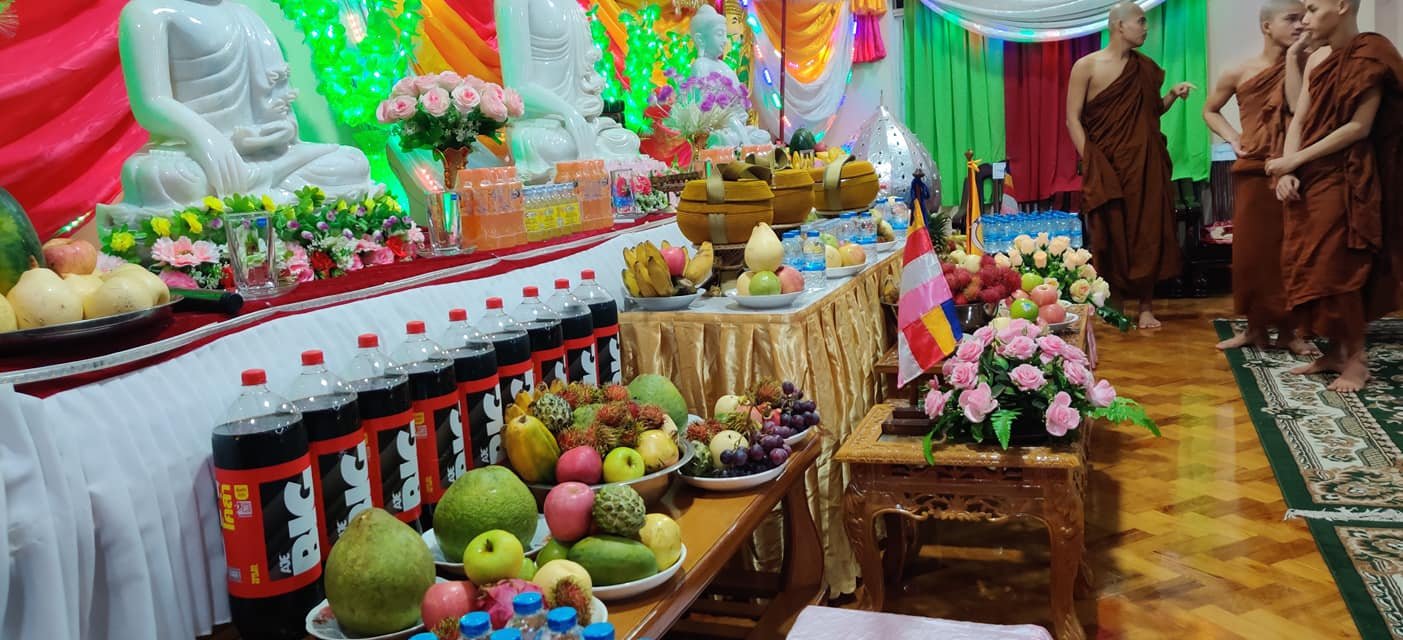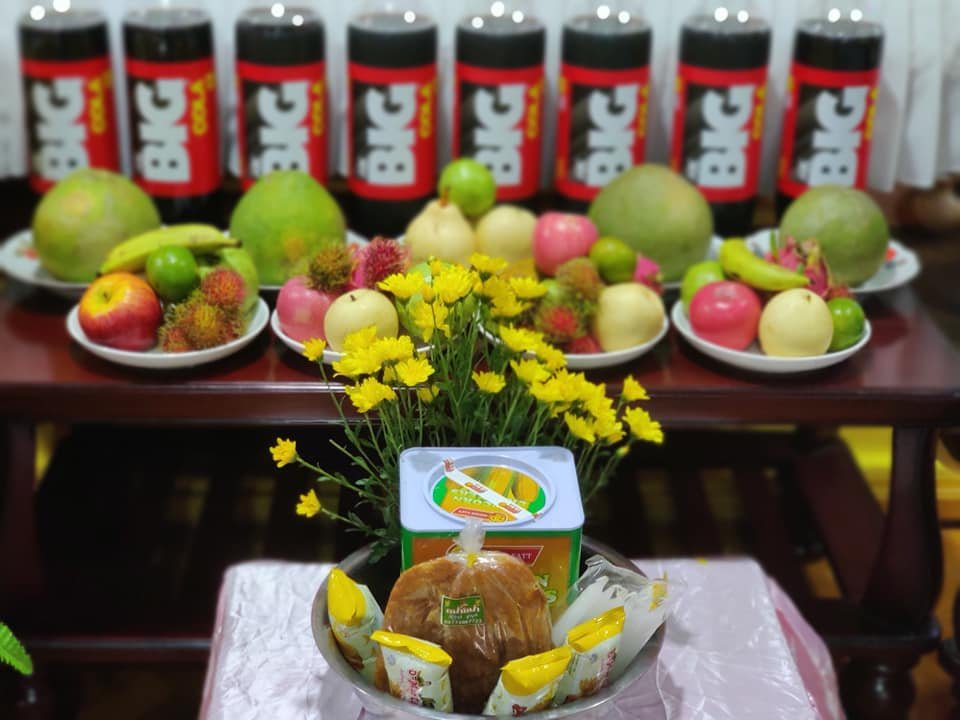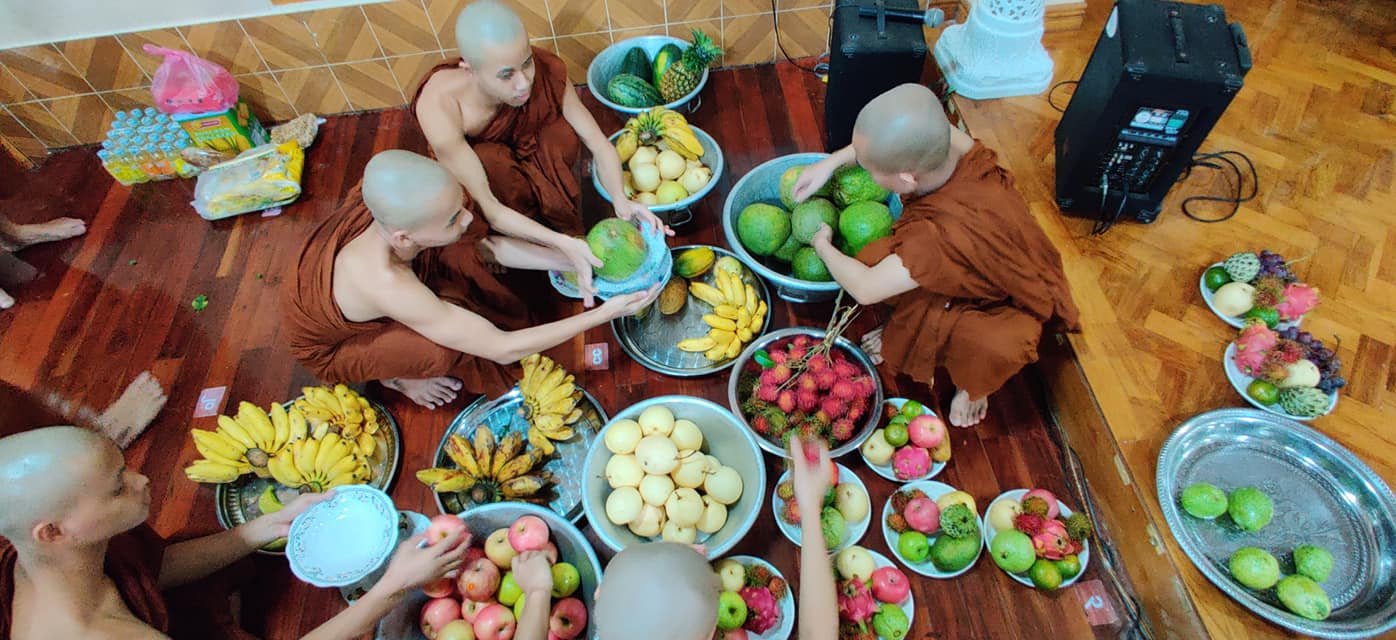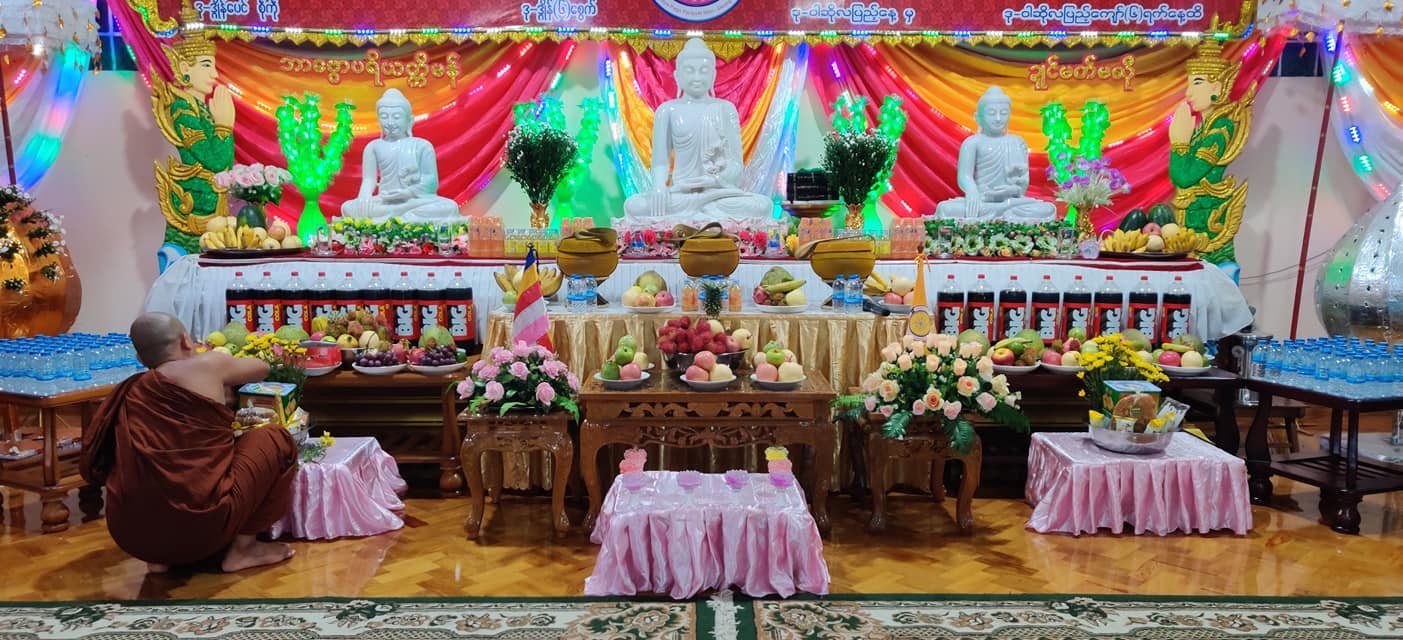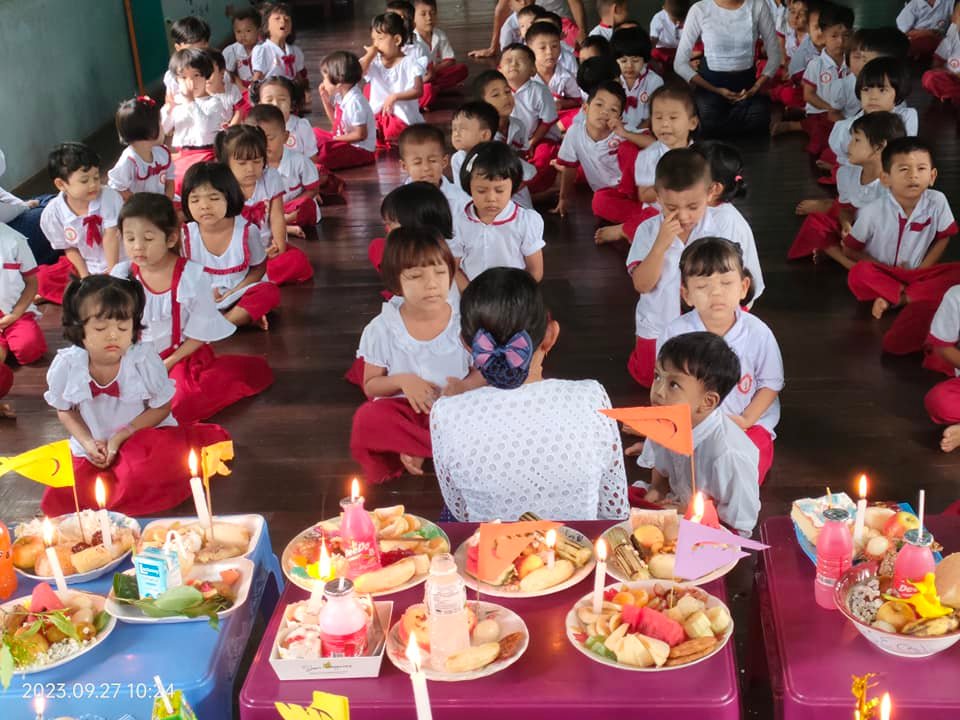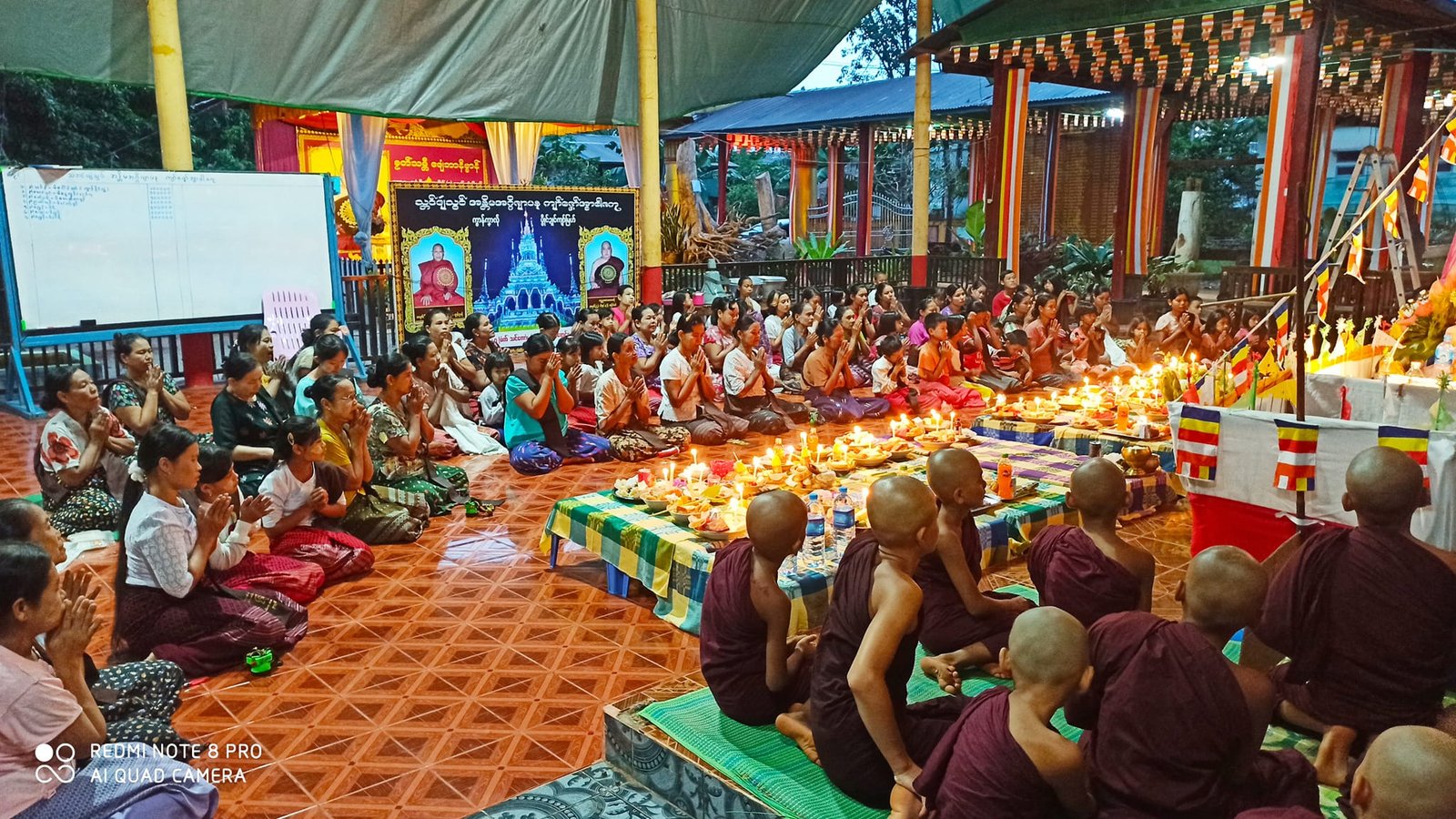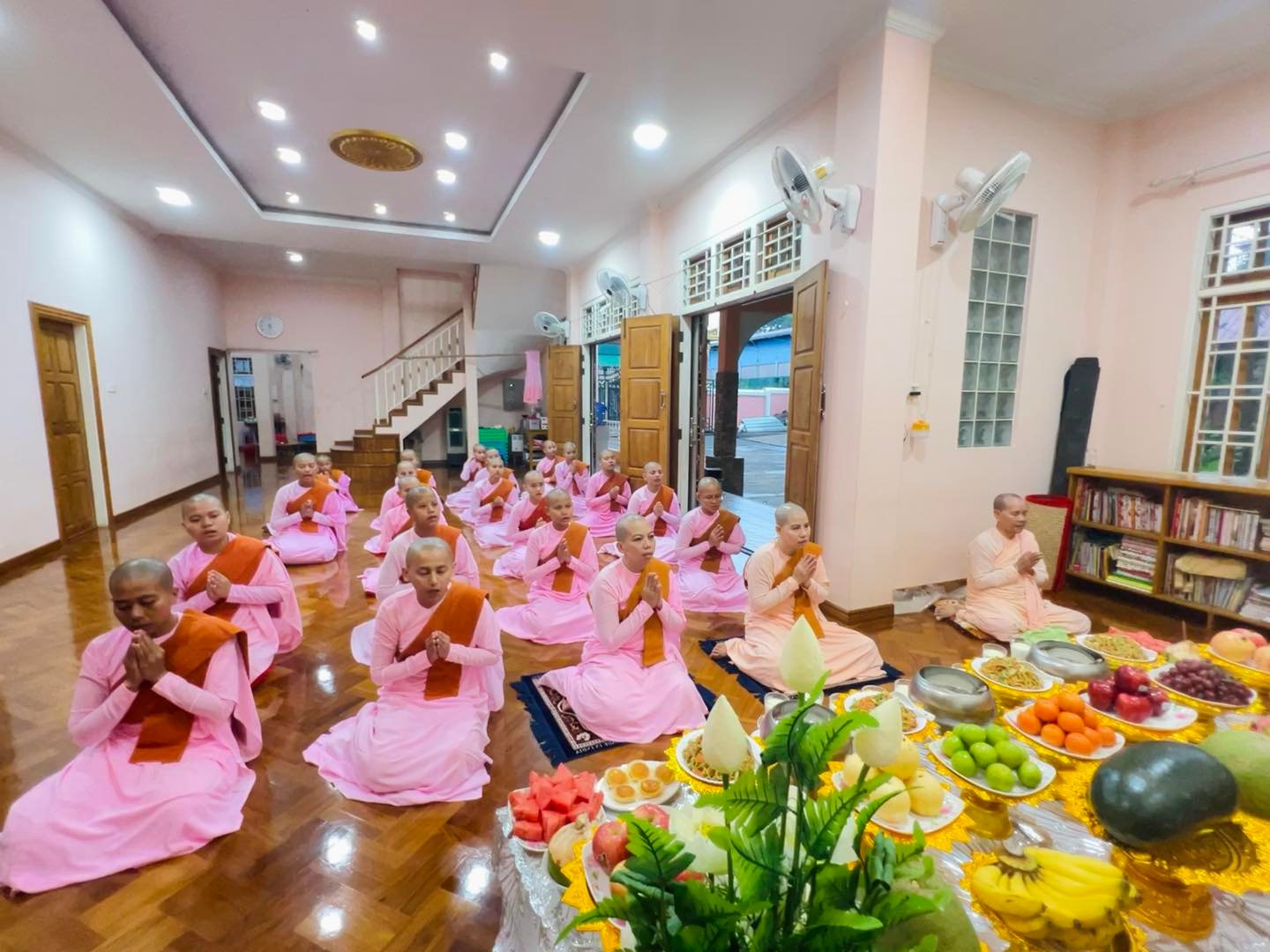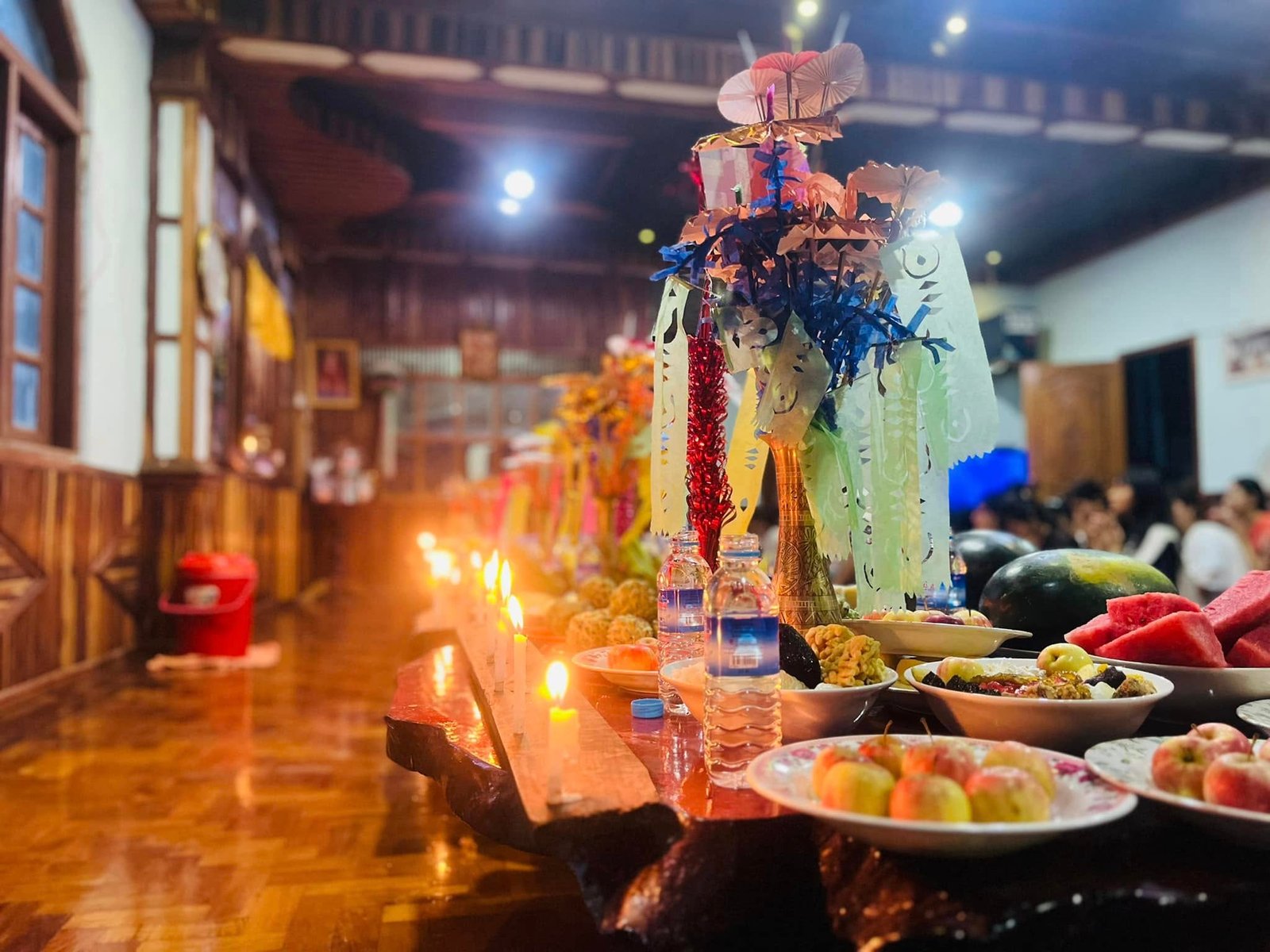The traditional custom of Mon people alms food offering on the full moon day
Local Mon Literature and Culture Committee (Yangon) and Ramanya Ponnya Kari Association (Yangon) jointly held Mon traditional alms food offering at the Mon Community Hall on Thursday. On every full moon day of Tawthalin, Mon ethnic people from every ward, village and township across the nation offer alms food dedicating to the Lord Buddha. The tradition of alms food offering of Mon people has flourished since Sasana Era 450 (94 B.C). According to the saying of ancient wisdom and the chronicles, the tradition of alms food offering in the ship-shaped stupas has been held every full moon day of Tawthalin in wards and villages of Mon people since the time when Pitakat or religious scriptures were started to bring in the region of Ramanya, Mon land. Dr. Min Khin Sein, Chairman, Mon Literature and Culture Committee (Yangon) said ” Actually, alms food offering is held at dawn of the full moon day of Tawthalin. As a Mon tradition, variety of fruits, snacks and food, flowers, candles and streamers that we want to offer will have to be brought to the monasteries or community places in the evening of the day before the full-moon day and then, the sanghas offer the donated food to the Buddha images at dawn and shared merits.” At the alms food offering ceremony, Mon ethnic people in the respective townships of Yangon region offered variety of fruits, snacks and food. Mi Moe Moe San, South Dagon Township said ” As the preservation of our Mon tradition, our new generations annually come to donate variety of fruits, streamers, snacks and desserts to the Lord Buddha. This is our Mon tradition and the event is held annually every full moon day of Tawthalin.” Mi Aye Aye Thein, Hlaing Township said ” This is the tradition and custom of Mon people. It is a festival that has been held since long ago. We also bring new generations of Hlaing Township. We’d like to know this tradition to them and to preserve it.” The donation is also aimed to intend to promote unity and friendship among Mon people living in the townships of Yangon Region and to preserve the traditional custom by handing down to the new generation.
Benefits of Fruit Offering
Offering fruits as alms in Buddhism is a meaningful act of generosity and devotion. Fruits symbolize purity and the gifts of nature, representing respect for the Buddha, the Dhamma, and the Sangha. This practice helps cultivate inner peace, gratitude, and mindfulness. It is believed to bring good karma, prosperity, and blessings for good health and long life. Families who participate in fruit offering rituals often strengthen their unity and community spirit. It also serves as a valuable lesson for younger generations, teaching them compassion, generosity, and respect for tradition. Fruit offering remains a significant part of cultural and spiritual life.
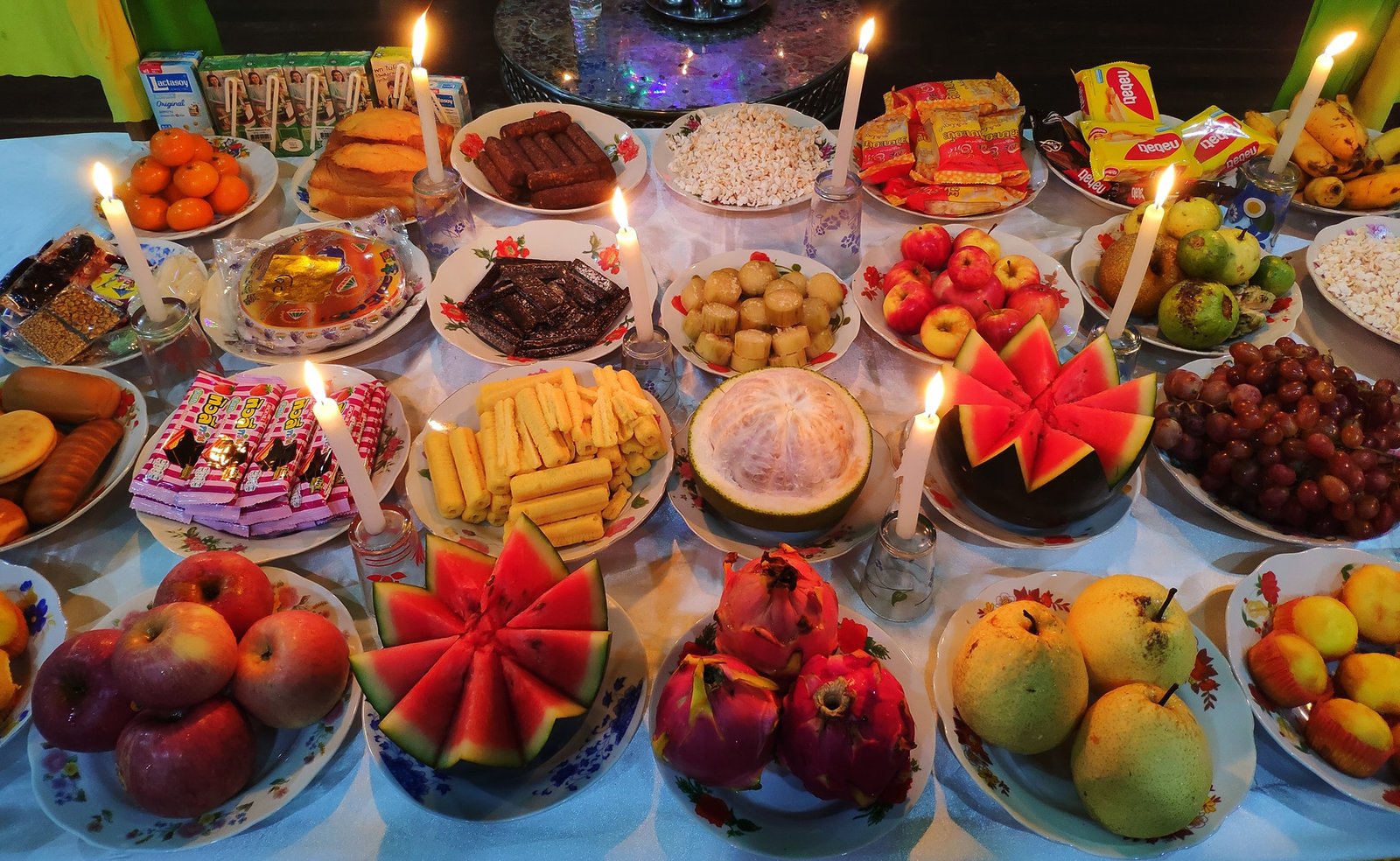
Benefits of Lighting Oil Lamp
Community members gather in unity to release a handmade hot air balloon, symbolizing hope, merit, and the sending of prayers to the heavens. This vibrant tradition is part of Tawthalin or Waso festivals, reflecting devotion, joy, and the beauty of Mon cultural celebrations.
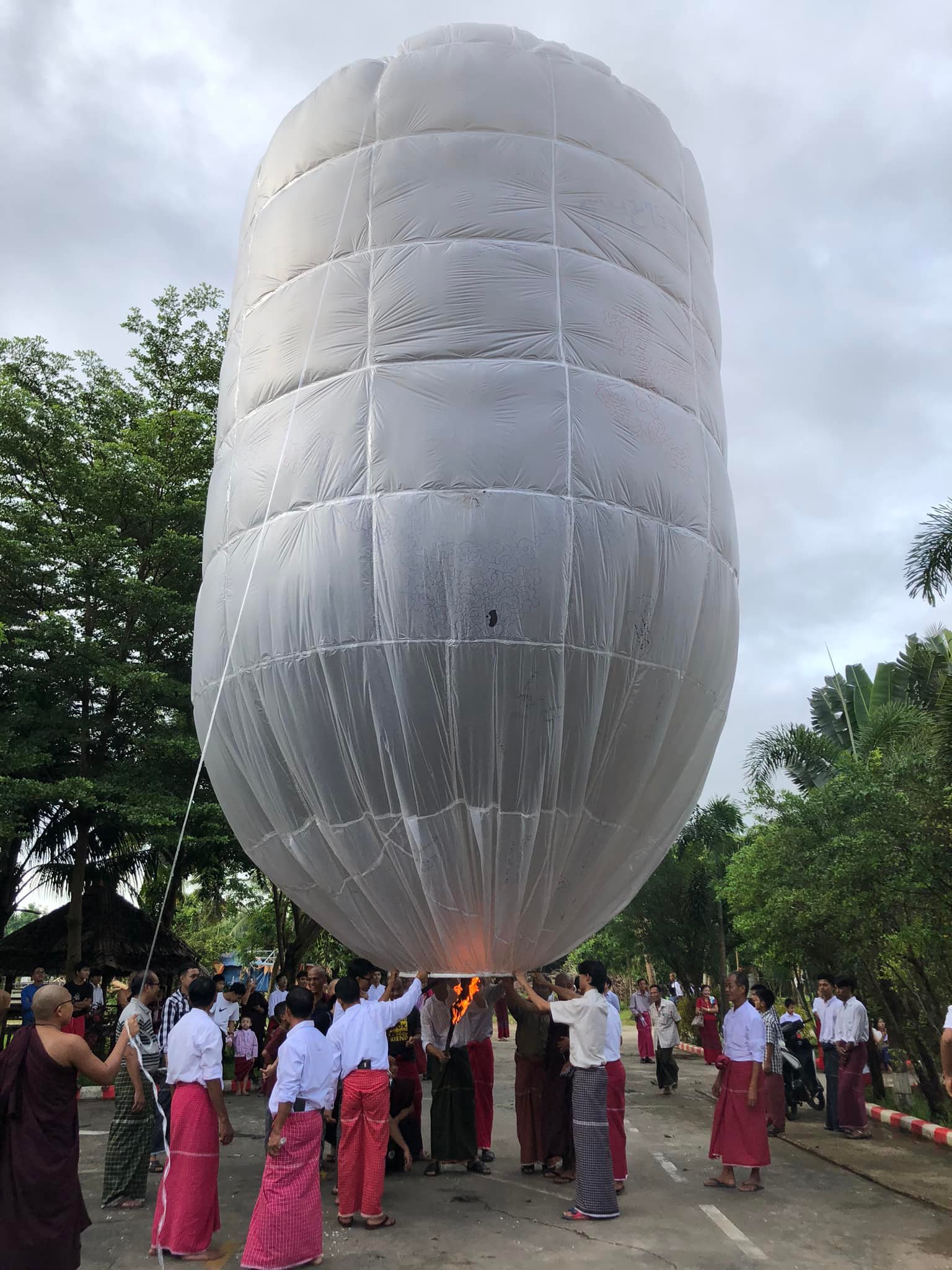
Benefits of Offering White rice and Curry
Offering white rice and curry to monks is a highly respected act of generosity in Buddhism. It represents purity, gratitude, and reverence toward the Sangha. By giving clean and nourishing food, donors cultivate a pure mind and accumulate good merit. This offering is believed to bring blessings such as good fortune, family harmony, long life, and good health. It also helps preserve cultural values and spiritual discipline within the community, making it a meaningful and beneficial tradition.

Gallery Activity
